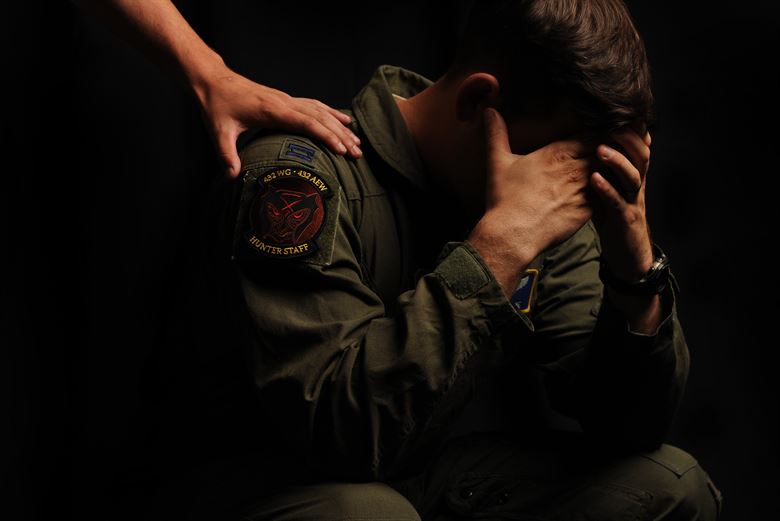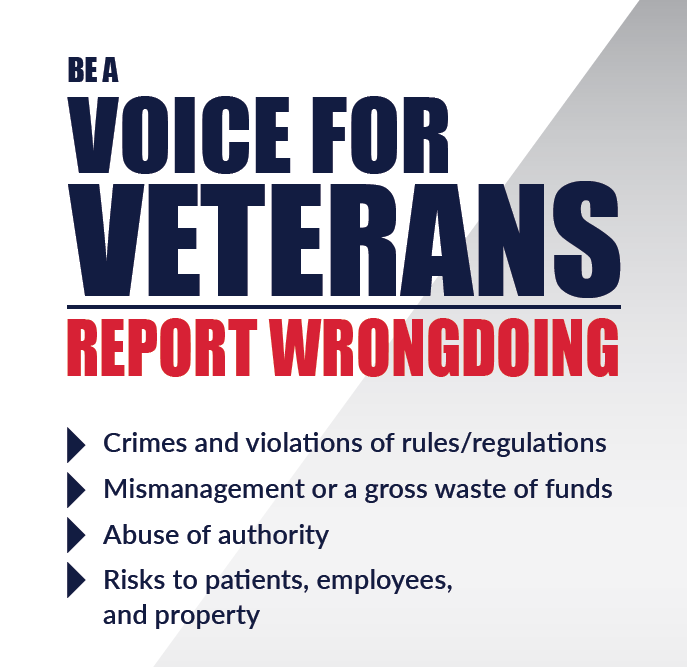- Home
- Advice for Veterans
- Stigma of MH Treatment
The Stigma of Mental Health Treatment in the Military
United States military service members and veterans know all too well about the stigma of mental health treatment in the Navy, Marine Corps, Army, Air Force, and Coast Guard.
|
stigma, n. ... a mark of shame or discredit : disgrace, stain.1 |
PTSDexams.net is an educational site with no advertising and no affiliate links. Dr. Worthen conducts Independent Psychological Exams (IPE) with veterans, but that information is on his professional practice website.
Many veterans report not seeking mental health treatment during their military service due to this stigma.
Unfortunately, these service members—once they become veterans—may encounter difficulties if they file a Department of Veterans Affairs (VA) claim for VA service-connected disability benefits, since they cannot provide documentary evidence that their psychiatric illness began during their military service.
In addition, veterans indicate that some C&P examiners seem skeptical when they explain why they did not seek mental health treatment during service.
Purpose of this Article
This article seeks to:
(a) Educate psychologists and psychiatrists who conduct VA disability claim exams about the stigma associated with seeking mental health treatment in the military;
(b) Review research demonstrating that stigma regarding mental health treatment definitely exists in the United States armed forces;
(c) Provide a list of citations to this research literature for veterans, VA-accredited claims agents, and veterans law attorneys.
Stigma of Mental Health Treatment in the Military: Research Evidence
Citation
Ben-Zeev, Dror, Patrick W. Corrigan, Thomas W. Britt, and Linda Langford. “Stigma of Mental Illness and Service Use in the Military.” Journal of Mental Health 21, no. 3 (1 Jun 2012): 264–73. https://doi.org/10.3109/09638237.2011.621468
Abstract
BACKGROUND: Many service members do not utilize the available services designed to assist them in coping with post-traumatic stress disorder and other mental health problems that emerge during active duty.
AIMS: In the current paper, we discuss the possible role stigma plays in the underutilization of treatments in the military, and attempt to transfer a well-articulated framework for understanding stigma and stigma-change in civilian populations to the military context.
METHODS: The literature was searched for papers reviewing negative beliefs about mental illness and fears of stigmatization and underutilization of treatments, especially as relevant to service members.
RESULTS: We explain how public stigma, self stigma, and label avoidance may emerge as barriers to care seeking and service participation in soldiers, and propose approaches/strategies for change. We then discuss a number of recent applications of these approaches in both civilian and military initiatives.
CONCLUSIONS: Stigma-change programs specifically created by/for the military that integrate components of education and direct contact with respected peers or veterans who have coped with mental health problems may have great utility at both the early stages of military training and later, when soldiers return from theatres of operation.
Citation
Hipes, Crosby. "The Stigma of Mental Health Treatment in the Military: An Experimental Approach". Current Research in Social Psychology, 2011. https://uiowa.edu/crisp/sites/uiowa.edu.crisp/files/18.5.pdf
Abstract
The stigma of mental health treatment in the military may operate via the stereotype that soldiers who seek treatment are weak.
Perceptions of weakness derive from the belief that treatment violates military norms of group cohesion and individualistic coping.
This vignette study examines the effects of group-centric motivation and a shared ingroup on weakness perceptions. Results show no effect of the experimental variables on perceived weakness.
However results yield support for the hypothesis that contact with others who have sought treatment will reduce stigma.
Also, officers stereotyped treatment seekers as weak more than did junior enlisted personnel [non-commissioned officers].
Citation
Michalopoulou, Lito E., Janet A. Welsh, Daniel F. Perkins and LaJuana Ormsby. "Stigma and Mental Health Service Utilization in Military Personnel: A Review of the Literature". Military Behavioral Health 5, no. 1. (2017): 12-25. https://doi.org/10.1080/21635781.2016.1200504
Abstract
Empirical studies have consistently demonstrated that military personnel underuse mental health services.
Stigma associated with seeking and receiving treatment has been hypothesized to play a significant role in failure to access potentially helpful services and supports.
The authors reviewed peer-reviewed articles published from June 2000 to June 2015 and examined how stigmatizing attitudes, attributions, and beliefs about mental health conditions, mental health treatment, and seeking help influence help seeking and service utilization for different military personnel subgroups.
The authors highlight patterns and inconsistencies identified in the literature and provide recommendations for future research and clinical practice.
Citation
Sharp, Marie-Louise, Nicola T. Fear, Roberto J. Rona, Simon Wessely, Neil Greenberg, Norman Jones, and Laura Goodwin. "Stigma as a Barrier to Seeking Health Care Among Military Personnel With Mental Health Problems". Epidemiologic Reviews 37, no. 1 (Jan 2015): 144–62. https://doi.org/10.1093/epirev/mxu012
Abstract
Approximately 60% of military personnel who experience mental health problems do not seek help, yet many of them could benefit from professional treatment.
Across military studies, one of the most frequently reported barriers to help-seeking for mental health problems is concerns about stigma. It is, however, less clear how stigma influences mental health service utilization.
This review will synthesize existing research on stigma, focusing on those in the military with mental health problems.
We conducted a systematic review and meta-analysis of studies between 2001 and 2014 to examine the prevalence of stigma for seeking help for a mental health problem and its association with help-seeking intentions/mental health service utilization. Twenty papers met the search criteria.
Weighted prevalence estimates for the 2 most endorsed stigma concerns were 44.2% (95% confidence interval: 37.1, 51.4) for “My unit leadership might treat me differently” and 42.9% (95% confidence interval: 36.8, 49.0) for “I would be seen as weak.”
Nine studies found no association between anticipated stigma and help-seeking intentions/mental health service use and 4 studies found a positive association. One study found a negative association between self-stigma and intentions to seek help.
Counterintuitively, those that endorsed high anticipated stigma still utilized mental health services or were interested in seeking help.
We propose that these findings may be related to intention-behavior gaps or methodological issues in the measurement of stigma. Positive associations may be influenced by modified labeling theory. Additionally, other factors such as self-stigma and negative attitudes toward mental health care may be worth further attention in future investigation.
- Home ›
- Advice for Vets ›
- Stigma
Subscribe to receive new articles and other updates
What Do You Think?
I value your feedback!
If you would like to comment, ask questions, or offer suggestions about this page, please feel free to do so. Of course, keep it clean and courteous.
You can leave an anonymous comment if you wish—just type a pseudonym in the "Name" field.
If you want to receive an email when someone replies to your comment, click the Google Sign-in icon on the lower right of the comment box to use Google Sign-in. (Your email remains private.)
↓ Please comment below! ↓



